Hide and Seek with Secretary of State Steve Simon and "Election Integrity" Republicans
Data automatically collected by tabulators which tallied Minnesota votes in the 2020 General Election could resolve whether election fraud occurred, but that data has been withheld from the public for over 22 months, and continues to be, in all 87 Minnesota counties, while even the Minnesota Secretary of State Steve Simon has seemingly tried to falsely suggest releasing this public data would violate the law but providing no statute to support that claim.
A Lawyer’s Skill in Selling
The latest agitprop from MPR and MinnPost aim to distract readers from taking daily actions now to revive safe and effective elections township by township, county by county, resting control of outcomes away from black box computerized systems and returning to the will of voters, by counting and tallying ballots by human hand.
Because everything to subvert an election exists within the machines themselves, voters will continue showing up in larger and larger numbers to township board meetings and commissioner meetings to express their lack of confidence in the electronic voting system which has so many red flags (Otero County, August 11, 2022) as to make many rightly question whether its flaws were not mistakes but bad by design. Township boards have already passed hand tally resolutions for the August 9, 2022 primary in Minnesota, a trend that seems likely to spread as more supervisors realize their authority to offer alternatives to the machines even if county auditors and attorneys attempt to interfere.
This, this, and this (cast vote record coverup series) have begun chronicling the utility of cast vote records. Only a tiny sample of communications statewide seeking transparency from local government is shared in those articles. In the future, communications between the people and government on important matters like this are likely to be made public through utilities like a decentralized version of Project Apario which might automatically ingest documents for timely public access.
The immediate publication of the 2020 General Election cast vote records for all Minnesota counties, as was also called for ahead of the 2022 Primary Election at a Carver County commissioner meeting, could resolve many questions that concerned voters have because they show what the tabulators logged while recording, tallying, and reporting votes. The authors of the MPR and MinnPost articles show no indication of having read these reports although the MPR writer was invited to when they asked me to interview for the MPR piece, which I declined after it appeared the writer wasn’t interested in rigorously studying available research, data, and evidence on the electronic voting system.
There are no released cast vote records from 2020 and without them the veracity of the reported vote totals in Minnesota cannot even begin to be confirmed, especially after the Secretary of State declined to audit a small county (by population), Crow Wing.
Regarding the cast vote records, now the Minnesota Secretary of State has said:
Some requests are impossible to meet, such as numerous data requests counties are receiving for the cast vote record, or CVR, an electronic record of how an individual voted.
Vote tabulating machines can only produce a CVR if that feature is turned on ahead of time, which no Minnesota county did in 2020, Simon said. And there are questions whether such data is even public under Minnesota law.
Now, we already know from ES&S’s FAQ page that they support cast vote records, which is part of why “numerous data requests” are coming into election offices statewide.

Mr. Simon’s background and experience as a lawyer is on display here, but before analyzing his comments in light detail, remember that many are quite aware of Mr. Simon’s participation in the preparation for the 2020 General Election in Minnesota—the following cases were put into motion after the Minnesota Legislature, in April 2020, rejected Secretary of State Steve Simon’s request for irrevocable power to alter election law during a pandemic.
- LaRose v. Simon - 1) Removed witness requirements for mail voters in Primary - 2) Extended the deadline to accept mail ballots (2 days) - STIPULATION AND PARTIAL CONSENT DECREE - Read LaRose Order 62 CV 20 3149 Order on July 31 Motions
- NAACP v. Simon - 1) Removed Witness Requirements for mail voters in General, 2) Extended the deadline to accept mail ballots (7 days), 3) MN Supreme Court Scheduled for September 3, 2020 - STIPULATION AND PARTIAL CONSENT DECREE - Read NAACP Order 62 CV 20 3625 Order on July 31 Motions
Now let’s take a closer look at the MNSOS’s comments on the cast vote records.
Some requests are impossible to meet, such as numerous data requests counties are receiving for the cast vote record, or CVR, an electronic record of how an individual voted.
First he highlights “an electronic record of how an individual voted,” perhaps to play on unfounded fears that by publishing aggregations of votes cast that ballot secrecy will be broken. If that were true, why then would the EAC’s Voluntary Voter Guidelines (VVSG 1.0) regard cast vote records as a method of independent verification to be not optional but rather a requirement?
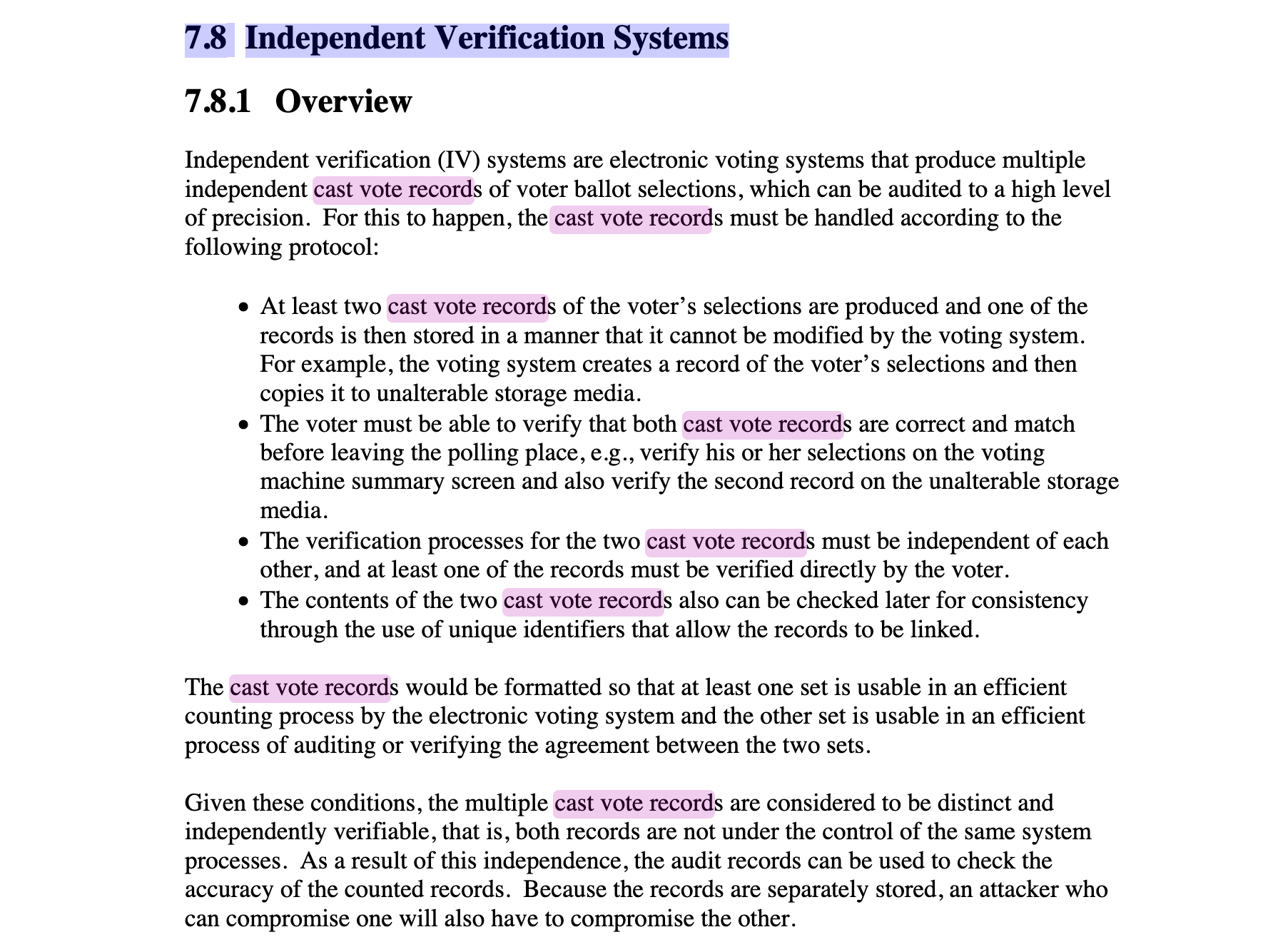
What the public stands to gain from cast vote record analysis is whether there are statistically significant indicators of ballot stuffing or digital manipulation. When comparing reports from different counties, as is being done on the more than 500 reports already in the Ordros repository, patterns can be noticed to suggest further investigation.
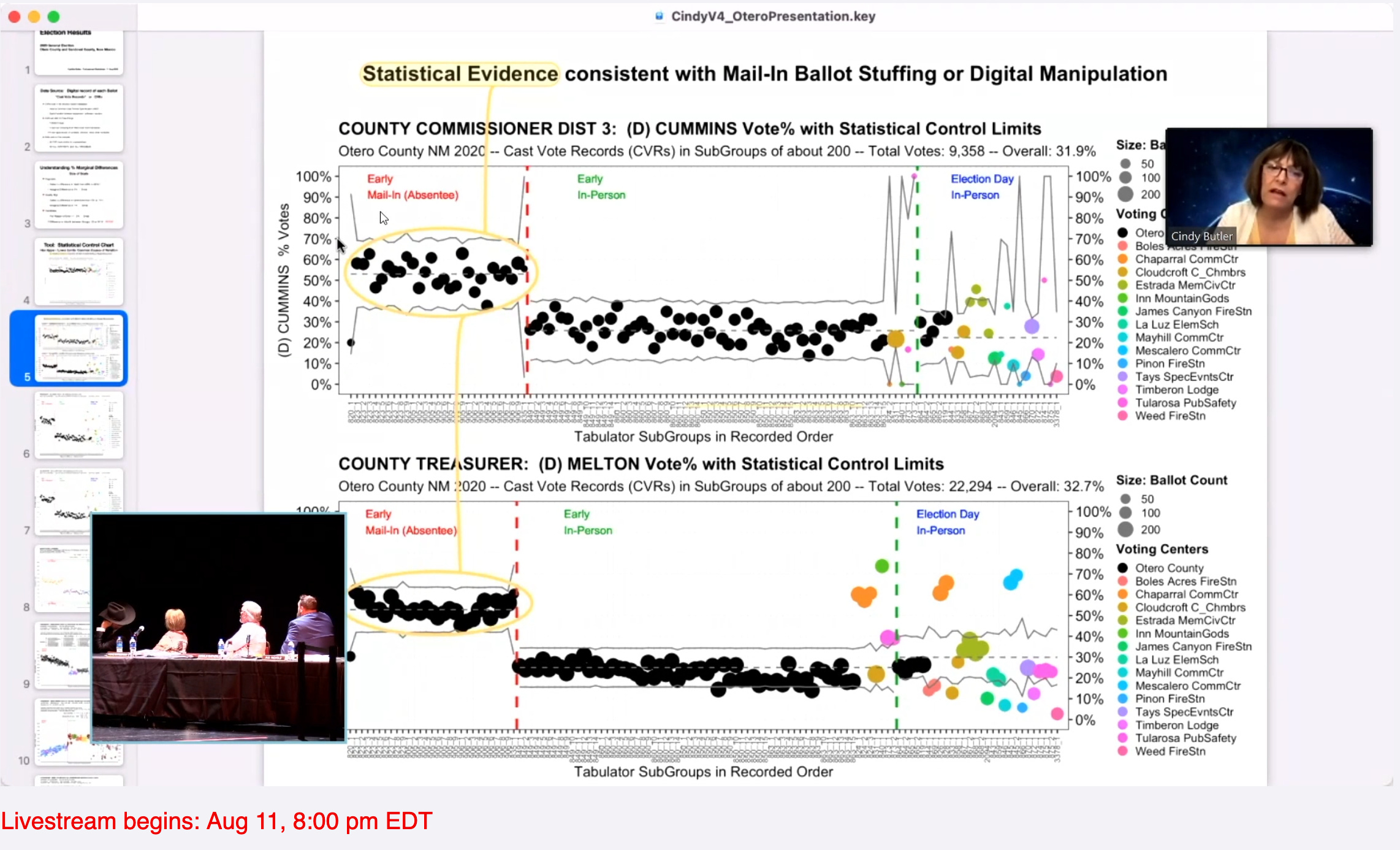
Vote tabulating machines can only produce a CVR if that feature is turned on ahead of time, which no Minnesota county did in 2020, Simon said. And there are questions whether such data is even public under Minnesota law.
The next statement is true if and only if the term “CVR” === ballot image.
However, what is referred by the cast vote record can mean several things.
For instance, the particular kind of CVR useful for data analysis is “a row-type record of contests, choices, and many other variables” and that data is used to provide an analysis of the aggregated vote tallies by Mrs. Butler and others.
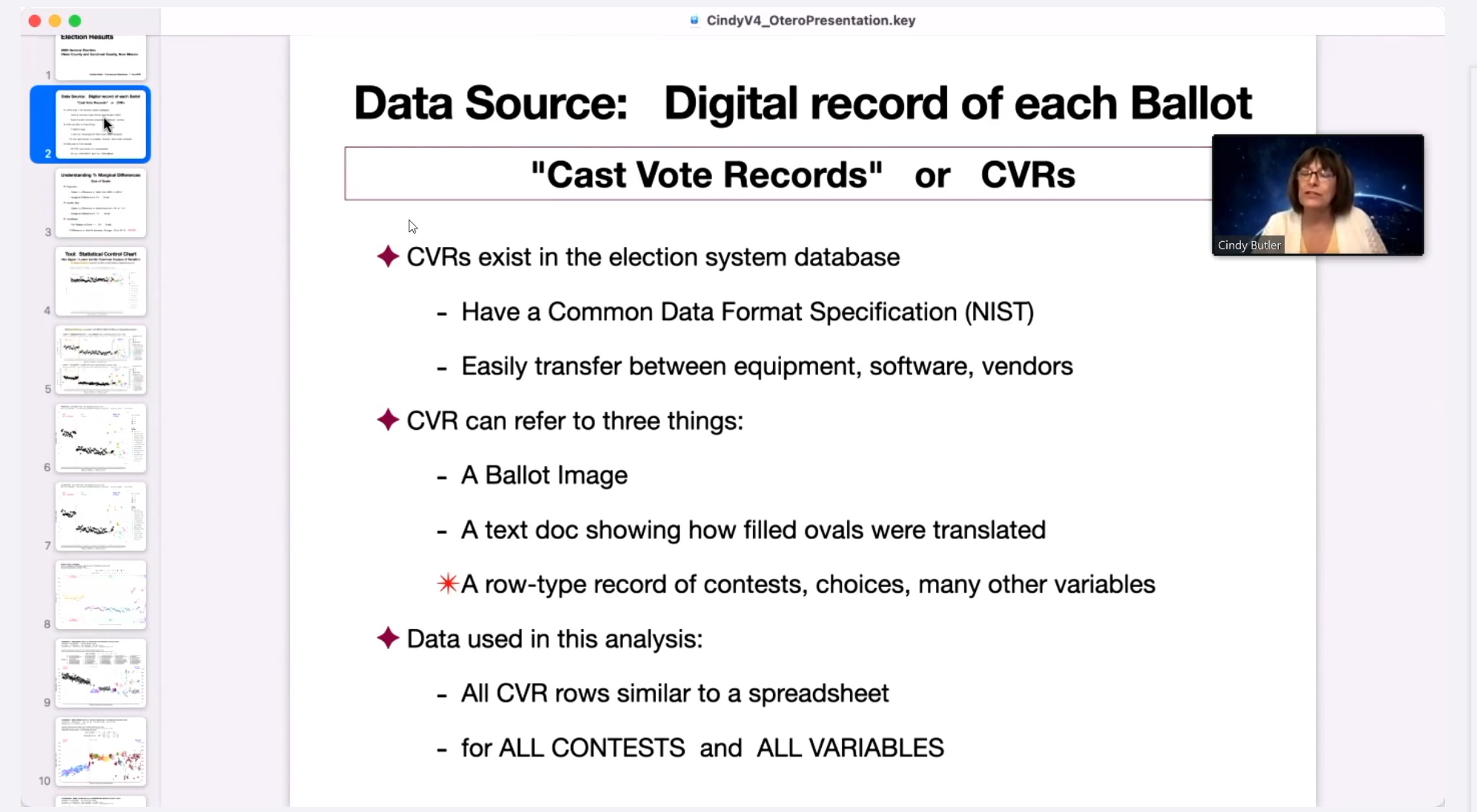
From the National Institute of Standards and Technology we have the following definition, purpose, and process for cast vote records:
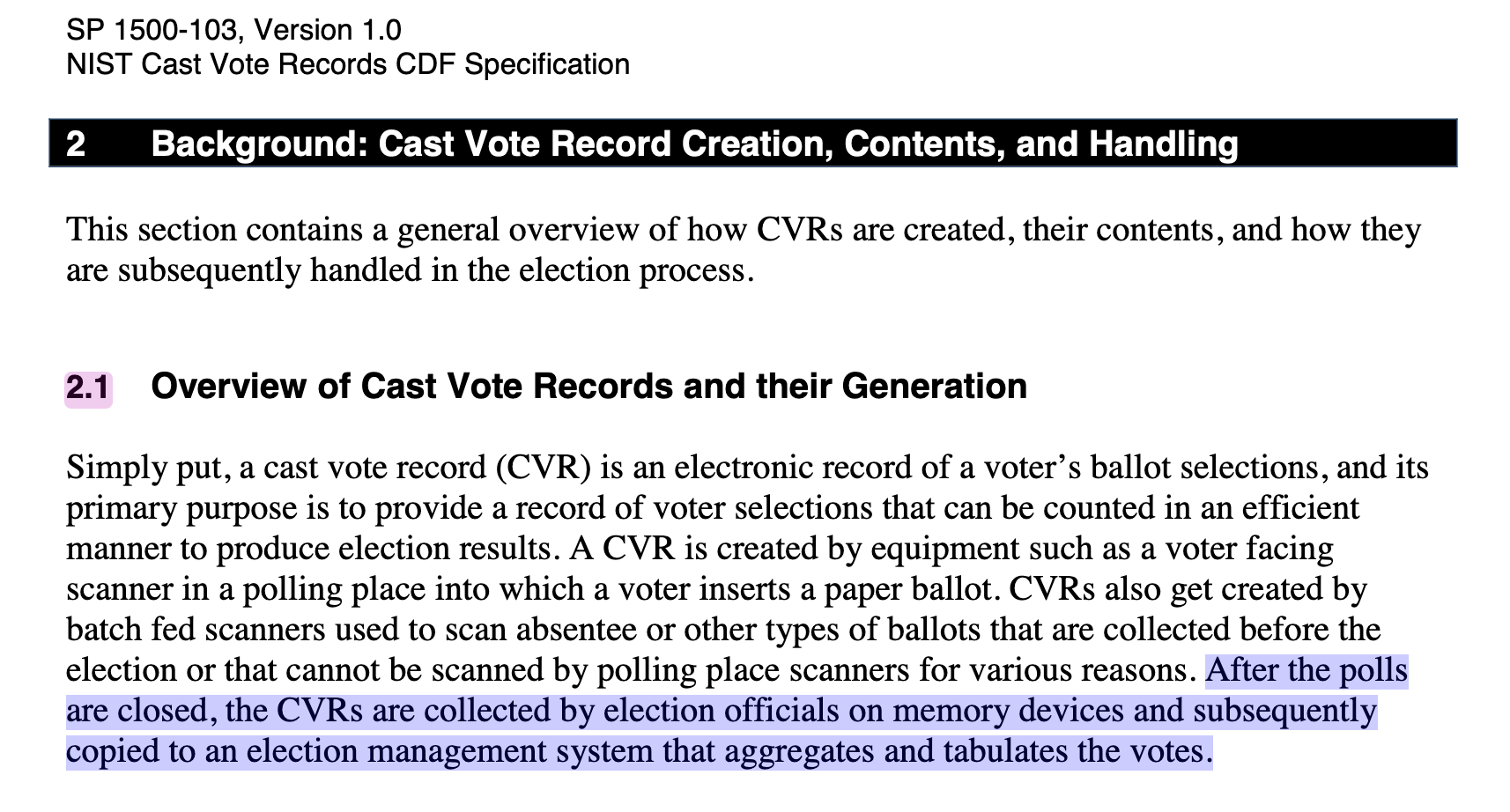
While completing a draft of this book on election fraud in Minnesota, I found a note in the ESS DS200 Operator’s Manual.
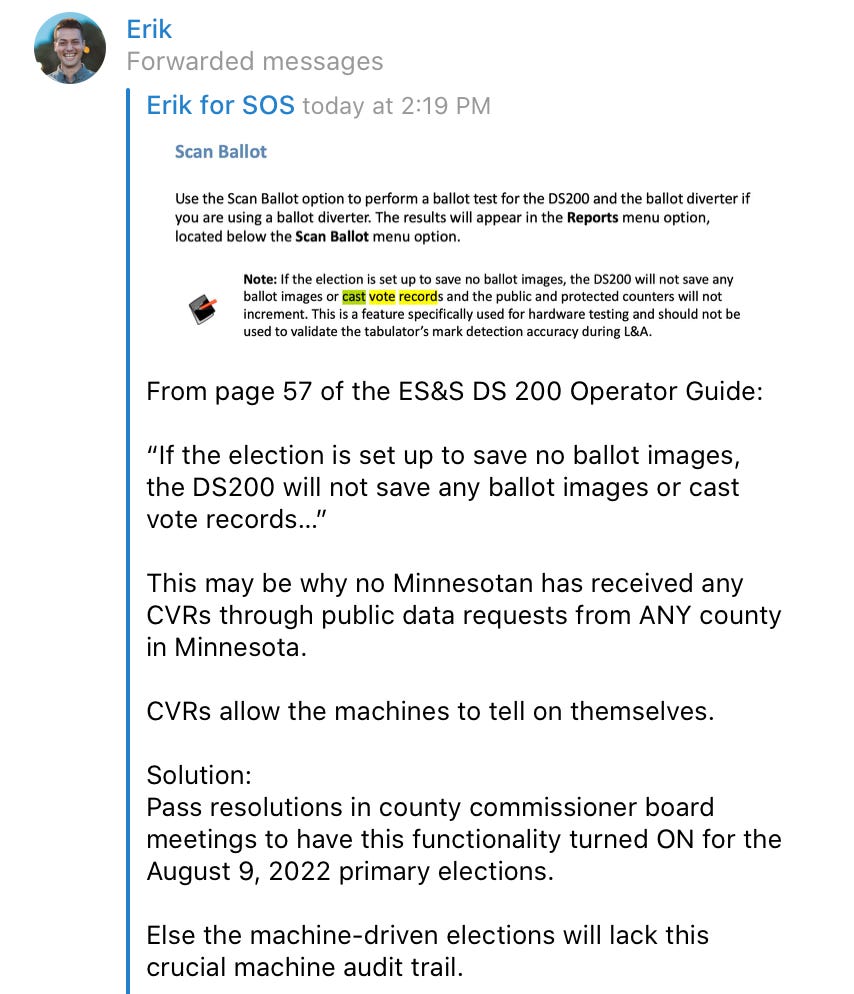
Now, at that point, in about June 2022, I still thought what Mr. Simon has now seemed to confirm, that the save ballot images feature was turned off on many tabulators, actually meant no cast vote records were able to be published from the 2020 General Election.
This is NOT true.
The data is there. It has to be. Else the counties would be in violation of both state and federal record retention laws.
The public data requested from ESS, Dominion, and Hart counties (public data request templates) makes clear what data is being requested and these templates have been in use throughout the state. Often, like Mr. Simon tries to imply, the CVRs don’t exist according to election offices. We’ve already covered that what is sought is not something called a CVR but rather the data which provides transparency and verifiability of the vote tallies, which should be emphasized is public data.
So far the most interesting request email chains have ended with county attorneys, administrators, and auditors when they are asked to provide the Minnesota Statute which prevents the release of this public data that would help to resolve many election integrity questions—none have been able to do so.
If none can, than Mr. Simon’s following position seems weak at best.
And there are questions whether such data is even public under Minnesota law.
Questions from who? If there was any basis for such questions Mr. Simon could have simply stated which Minnesota Statute calls such public data release into question or which outright prevents their release.
There isn’t one.
Minnesota Statutes 13.01 and 13.03 are clear on public data dissemination.
Else Mr. Simon could have ended this discussion as quickly as a forensic audit in Crow Wing would have put the dangerous conspiracies he derides to bed already in early 2022.
Mr. Simon also omits that the most common tabulator in use in Minnesota during the 2020 election, the ES&S DS200, to my knowledge comes out of the box with the save ballot images feature turned ON. When save ballot images is turned on, one definition of the cast vote records (the scanned image of each ballot) becomes available.
When there is no direct cost to keeping this option in the default ON option, many have wondered why save ballot images was turned off.
But even if it is switched off, the data the public are entitled to are available.
At least one election official in Minnesota has said they do still have them from 2020.
Are Republicans and Conservative Outlets Looking the Other Way?
Well over 500 cast vote records nationwide from 2020 (zero valid from Minnesota) have been publicly released and are available on a repository on Ordros.com.
Once analyzed by experts like Jeffrey O’Donnell, Dr. Walter Daugherity, Draza Smith, or Cynthia Butler, patterns demonstrate statistical evidence of either ballot stuffing or digital manipulation. Using common sense it’s likely that both of these occurred in Minnesota.
Prior to the CVR discussion heating up, trend analysis alone from a former army captain Seth Keshel, who correctly predicted all 50 states electoral college results in 2016, suggested Minnesota favored Trump by about 2 points, a 9 point swing from the official* results.
Of course this writer is more interested in learning the impacts on many down ballot races, from county commissioner to school board to county auditor that may have been impacted by electronic election fraud at scale. It makes sense that a school board wouldn’t listen to parents’ concerns about CRT if they weren’t actually fairly elected, but rather [s]elected by a computer system.
Meanwhile supposedly conservative news outlets like Alpha News MN and Action 4 Liberty have been missing in action on the core of the issue—election fraud at scale—which has some like this writer wondering for just one example whether the brief removal of email list access to several primary candidates which defeated establishment picks for endorsements was merely a stunt to allow the editors to publish something tangential to election integrity so as to keep up appearances.
Even legislatures like Representative Eric Lucero who have backgrounds in computer security and computer forensics has not made removing the machines a priority and told me at the Rochester convention that bills he authors (or could author) are essentially powerless against the Democrats. I pick on Eric here because I first met Eric at the Cyber Symposium and donated to his campaign at a Child Protection League event. At the same event I met Dale Witherington, Founder and Chief Steward of Restore Minnesota, a proponent of election integrity who falsely claimed ownership of the push for the forensic audit in Crow Wing County because he had set up a community action team there and who Mark Koran recently gave credit to for work that in my opinion was done by Rick Weible, but who in several conversations seems more interested in the “Virginia model” (possibly an operation to persuade conservatives that machines aren’t the problem by allowing Governor Glenn Youngkin to win there) than in supporting the necessary goal to remove machines and return to human hand tallying.
Peace in Politics
It’s been recommended by more than one person that I stop writing what I observe especially if it it may hurt the Party or a particular candidate or even the election integrity movement. Generally those have probably misunderstood what I’m doing, which is asking questions and sharing what I deem as critical information that increases the public’s understanding about election fraud at scale in Minnesota. We are nearing the point where a critical mass will understand the unacceptability of computerized voting systems.
Yes, we do have to work toward peace, but as I strive to improve the way I do my work I will also strive to bring the best out of those who claim to have similar missions—simple criticisms which encourage further discussion and even honed strategies and tactics are generally welcomed by anyone with a learning mindset and generous attitude.
I understand election integrity isn’t everyone’s fight. (Some instead work on protecting children from communist curriculums in schools or from harmful vaccines or from sexual predators and trafficking.) But if someone says election integrity is their fight and yet they are comfortable with the rigged cheat machines, then it’s very possible that person or organization is whether knowingly or unknowingly actively harming or simply distracting good people from joining election integrity efforts such as those in county commissions or township board meetings. Simply watching the first 17 minutes of [S]election Code or reading the first 3 pages of the Mesa County Report #3 should spark anyone’s curiosity regarding the electronic voting system which has in the final analysis of this writer attempted to enslave us.
To learn more about cast vote records, here is Rick Weible of Midwest Swamp Watch: